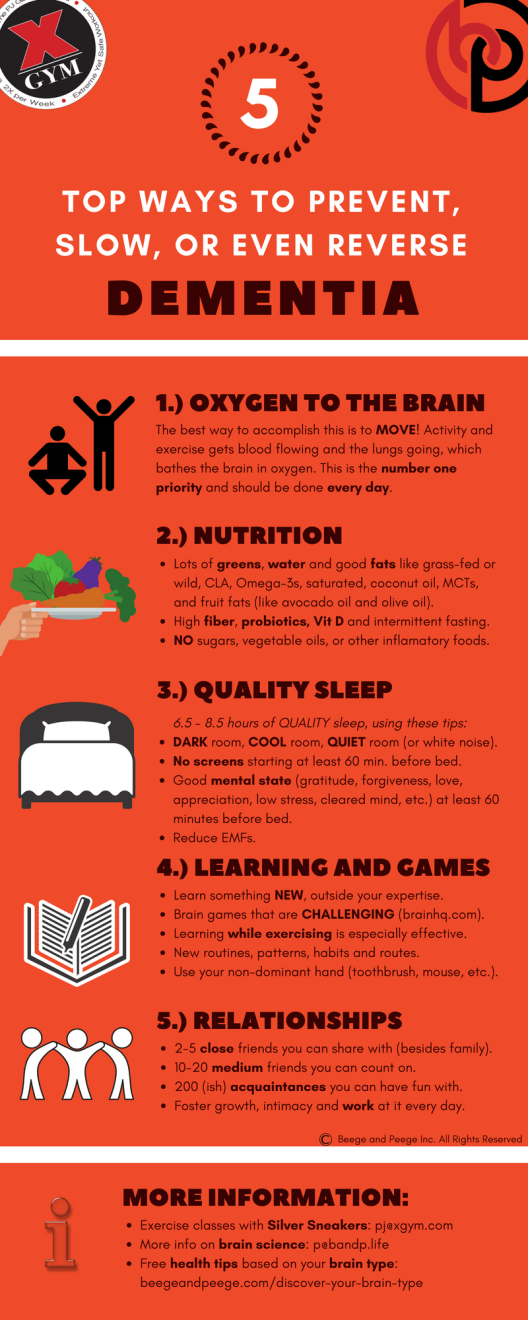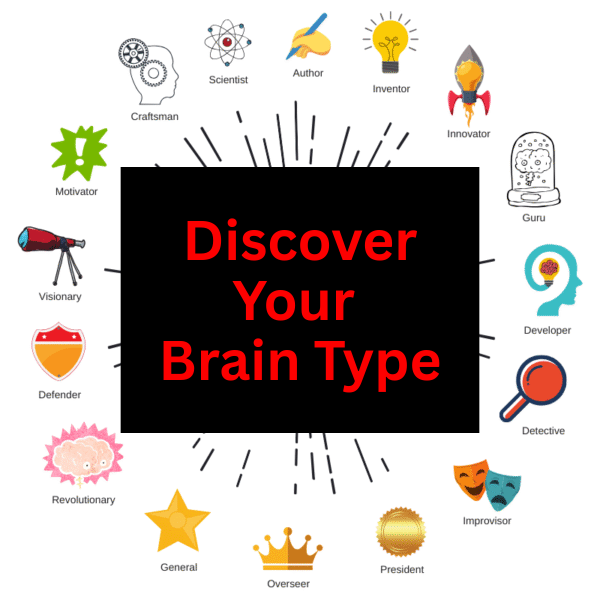
Some of you might already know that I lost my mom to early-onset Alzheimer’s disease (AD) in 2005. She was diagnosed in the year 2000, but we knew it several years before that.
To try to help her, I threw myself into the research in brain science back in 1997. I was already doing tons of research on health and exercise, so I was familiar with things that were good for the brain (which also happened to be things that are good for the heart), but I focused more on brain science to see if there was anything I could do to help her.
Back then, there wasn’t enough research to develop the right kind of plan, so I really couldn’t help her much. Medical “wisdom” at the time concluded that AD was not fixable or reversible, but there were some drugs that could slow it down. These drugs had pretty nasty side effects, though, so they weren’t a good solution.
After she passed, I kept studying the research because what I had already learned from 1999 to 2005 was that discoveries were coming out every day, so I figured there was hope that somebody would come up with something better than what the current Western medical “wisdom” was telling us.
I’m glad I stayed buried in the research (and I will never stop) because what I have learned through all those years is astonishing. The knowledge we are gaining now about AD and the brain seems to be exponential. It was actually in 2016 that the conclusion about AD being reversible was made!
We also now know that AD can be prevented (even in those individuals who have the genetic predisposition for it) and that AD can be slowed down or even stopped in those individuals who have it.
If you are wondering what the signs of AD and other forms of dementia might be, see my article on that by clicking here.
I could fill a thousand-page book with what I’ve learned since throwing myself into the research, but I’ve boiled it down to my top five tips for preventing, slowing, stopping, or even reversing AD and other forms of dementia.
If you follow all five of the recommendations below carefully every day, it is my opinion that you will never get AD. If you already have it (or any other kind of dementia), you can reverse it, especially if you are in the early stages when you are more likely to be willing and able to follow them.*
If you follow only four of these recommendations carefully and closely every day, you might still be able to reverse it, but you can almost surely prevent it, slow it down, or stop it.
If you follow just three of these recommendations carefully and closely every day, you will be doing better than most people, so your chances are better than theirs, but it might not be enough to prevent, slow, or reverse AD and other forms of dementia.

To get your individualized health tips for your unique brain type, go to braintype.me.
* I mention “willing and able to follow” these suggestions because most people with AD aren’t even willing to admit they have it, so they will probably also be resistant about following any steps to prevent, treat, or reverse it. This is one of the interesting characteristics of AD – that most victims vehemently deny they have it and don’t even want to discuss it, which makes working on it quite difficult since the first step that needs to happen before the work can start, is to accept it and then face it down through implementing strategies like these. Other forms of dementia don’t seem to include this characteristic of denial or defensiveness. In fact, when people have other forms of dementia, they sometimes even joke about having it. Those people are also usually more willing to start and maintain an aggressive program to fight dementia and even reverse it.
Final note: Oxygen to the brain is listed as #1 above for good reason. Plaques, tangles, and other correlations of AD hate oxygen, so get O2 in your brain! Exercise is the best way to do this and if you were to choose the best form of exercise, it would be high-intensity training – to your individual tolerance level – like X Gym because of it’s controlled nature and heavy nerve training emphasis (learning and games), along with the inherent oxygen uptake benefits. X Gym style training also helps with sleep because of the chemical changes in the body and stress release. Additionally, X Gym personal training and group training provide a social component, so 4 of the 5 points in the infographic above are covered with X Gym training. Finally, X Gym members get nutrition guidance, so if that is also followed, all five are covered!
It might sound like I’m trying to sell you on X Gym training or my Brain Type Test, but I’m not. I’m only explaining why they are both so good for preventing and treating AD, and the reason for all that is because the inventor (me) has extensive personal experience with AD, which has drastically affected the development of the X Gym program. I would be doing you a disservice if I didn’t mention them. For those who can’t go to an X Gym (or train with us online, or get the App), the second-best form of exercise is dancing because it also increases oxygen uptake, but also involves a major social component as well as strong coordination/nerve learning. A close third place is Tai Chi because of its intensive nerve training benefits, and if done with others, it has social benefits as well.
3/17/23 update: It turns out our attitude towards aging is another powerful way to prevent and reverse dementia and memory loss, so for more info on that, see my Substack article by clicking here.
5/21/25 update: I (PJ) just turned 59, and it was at my age that mom couldn’t remember her way back home to the house we lived in for two decades. My sister is two years older than I, and it was at her age that mom was enrolled in a memory care facility. My sister and I are both in Alzheimer’s studies and are breaking the brains of the researchers because our test results get BETTER every year. The scientists can’t explain it. Everyone else in the study ages normally in their brains, except us, because we are so diligent in the things listed above. I was actually kicked out of my study recently because I was such a confounding variable. The scientist told me they always remove the data of the top person in the study as well as the bottom person, but I wasn’t the top person. I was orders of magnitude above the top person, so they had to remove me as well, so I didn’t skew the results. This is a powerful testament that my sister and I are living proof this list works!
Now, because I have an AI chatbot for X Gym members that crawls my 400+ posts and my book, I need to type the top five things to do here so it can read it and summarize for those who use the X Gym AI agent.
There are hundreds of things one can do to prevent, slow, or even stop all forms of dementia. To keep it simple and actionable, I have boiled it down to these top five actions:
- Get oxygen to the brain. The best way, of course, is through activity and exercise.
- Good nutrition. This means eating whole foods, from organic sources, with a balanced diet. Certain fats are also key, especially Omega 3s and Medium Chain Triglycerides. Avoid vegetable oils and processed foods.
- Quality sleep. Getting 7-9 hours of good sleep is vital for brain cleaning and “housekeeping” functions that happen in the night.
- Learning and brain games. Anything that is HARD mentally is great for the brain, especially new things outside of your fields of expertise.
- Relationships. Having two to five close friends (family counts), where you have to work at keeping the relationship great or making it better, is amazing for the brain. Easy, casual relationships are fun, but they aren’t doing much for the brain, other than happiness and fostering gratitude.









